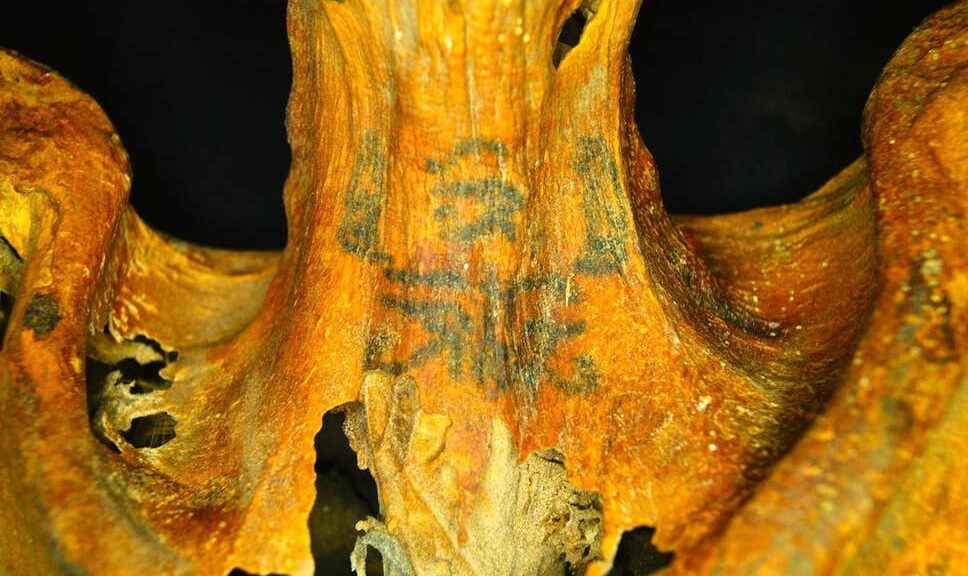Ornately-tattooed 3,000-year-old mummy discovered by archaeologists
In 2016, an ancient Egyptian mummy with symbolic tattoos was discovered by a team of archeologists, they thought were first of their kind.
The 3000-year-old mummified woman was tattooed with various symbols, including cows, lotus and divine eyes, which could represent her religious status or practices.
It was the first time that researchers had an Egyptian mummy with tattoos showing recognizable objects rather than abstract patterns and designs that made this discovery significant!
The mummy, as the team pointed out, was uncovered at a site near the western bank of River Nile.
Between 1550 BC and 1080 BC, the area was home to a village, known as Deir el-Medina, which was populated by the artisans and workers responsible for building the royal tombs of the Valley of the Kings.
It was while examining the skeletal remains at the Deir el-Medina site that Stanford bioarchaeologist Anne Austin, who was working at the time for the French Institute of Oriental Archaeology, first stumbled upon the fascinating symbols on the mummy’s neck.
She initially thought the markings had been drawn on the woman’s neck.
As Austin explained, it was customary in ancient Egypt to put amulets around the deceased’s neck for burial.
At times, the amulets were simply painted or even tattooed on the torso, as was probably the case with this mummy.

According to the team, further analysis using infrared scanning revealed a bunch of other markings that were quite possibly intended as permanent skin adornments than just ritualistic designs.
Along with archaeologist Cédric Gobeil, Austin cataloged over dozens of these symbols, some of which had clear religious significance. Speaking about the find, Austin said at the time:
As we started to analyze the markings on the arms, we realized that these markings were shrunken and distorted. Therefore, they must have been made prior to mummification… Several are associated with the goddess Hathor, such as cows with special necklaces. Others — such as snakes placed on the upper arms — are also associated with female deities in ancient Egypt.
Wadjet eyes, which are basically divine eyes representing God’s protection, were tattooed all over the mummy’s neck, shoulders, and back.
Along the mummified female’s neck, these marks might have also pertained to what are known as nefer symbols, or “the sign of beauty and goodness”. Austin said:
At the nearby site of Deir el-Bahri, the combination of the Wadjet and nefer have been interpreted as a formula for the phrase ‘to do good.

As the researchers pointed out, the tattoos’ position along the mummy’s throat (as in voice box) seems to suggest that the woman invoked the power to do good, every time she spoke or sang.
The discovery, according to Austin, alluded to the symbolic nature and role of tattooing in ancient Egypt. She went on to say:
Interestingly, all of the tattoos found so far have been exclusively on women, though we are curious to see if that trend continues as more tattoos are identified.
And finally, in case you are wondering, in spite of these particular set of tattoos being around 3000-years old, they are not the oldest known tattoos ever discovered by archaeologists.
That honor actually belongs to the 5300-years old Ötzi the Iceman, who was found quite unintentionally by a group of hikers in 1991 in the Oetztal Alps (in modern-day north Italy).

